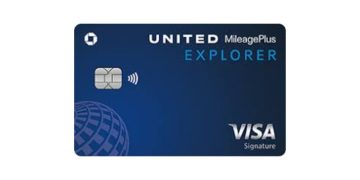Not sure how to open a certificate of deposit? Find out the details!

How to open a certificate of deposit is a common question for those looking for low-risk investment options in the United States.
Therefore, we have compiled all the necessary information in this complete guide on how to open a certificate of deposit (CD), from understanding what a CD is to the practical step-by-step process to set up your account.
If you are considering investing in a CD, read until the end to better understand this type of investment and how you can get started. Enjoy the read!
What is a Certificate of Deposit (CD)?
A Certificate of Deposit, or CD, is a type of savings account that offers a fixed interest rate for a specified period.
Unlike a traditional savings account, where you can deposit and withdraw money whenever you wish, a CD requires you to keep the money deposited for a specific term, known as the maturity term.
Thus, in exchange for this restriction on access, CDs generally offer higher interest rates than conventional savings accounts. Therefore, understanding this time commitment is essential to optimize your returns.
Understand the Pros and Cons of Certificates of Deposit
Now that you know how to open a certificate of deposit, it’s important to weigh the advantages and disadvantages of this type of investment.
Advantages
One of the main advantages of a CD lies in the predictability it offers. The interest rate remains fixed throughout the term of the investment, which means you have the security of knowing exactly how much money you will earn at the end of the period.
Thus, this feature facilitates financial planning, making it more precise and reliable.
CDs are widely recognized as low-risk investments, especially when offered by financial institutions insured by the FDIC (Federal Deposit Insurance Corporation).
The FDIC insures deposits up to a certain limit, offering an additional layer of protection to the investor.
Therefore, for those who prioritize safety and stability in their investments, understanding how to open a certificate of deposit represents a significant step.
Disadvantages
The main disadvantage of CDs is their lack of liquidity. That is, the investor cannot access the invested money before the maturity term without incurring penalties.
These penalties generally involve the loss of part of the interest accumulated up to the time of withdrawal.
This means that, when choosing a CD, it is important to be sure that you will not need the invested amount during the specified term.
The risk of missing out on opportunities is a point to consider. If market interest rates rise after opening the CD, the investor will be locked into the initially contracted rate until the maturity of the bond, missing the chance to earn a higher yield.
Therefore, when considering opening a certificate of deposit, it is crucial to carefully evaluate liquidity needs and expectations regarding interest rate trends.
What is Needed to Open a Certificate of Deposit?
The requirements to open a certificate of deposit vary among financial institutions. But they generally include:
- Presentation of a valid identification document, such as a driver’s license, passport, or another recognized document;
- Need to provide the Social Security Number (SSN) or Individual Tax Identification Number (ITIN) for tax purposes;
- Presentation of a proof of address, which can be a utility bill, a bank statement, or another document that verifies the residential address of the applicant;
- Making a minimum initial deposit, whose value varies according to the financial institution and the specific type of CD chosen.
Step-by-Step on How to Open a Certificate of Deposit
Understanding the basic concepts of CDs, let’s move to the practical step-by-step on how to open a certificate of deposit.
Choose the type of account
The first step to opening a CD is to choose the type of account. There are various types of CDs, each with different maturity terms and interest rates.
Among the options, we can mention short-term CDs, with maturities ranging from a few months to a year; long-term CDs, with terms extending for several years; and staggered CDs, also known as CD ladders.
Staggered CDs consist of distributing the investment in several CDs with different maturity dates, which allows the investor to have access to a part of the money invested at regular intervals.
The choice of the ideal account type depends on the financial goals of the investor and their investment horizon.
Find the right provider
After defining the type of account, the next step is choosing the provider. CDs can be purchased at various institutions, such as traditional banks, credit unions, and online brokerages.
Therefore, it is crucial to research and compare the interest rates offered by each institution, as well as analyze the contractual conditions.
Some important factors to consider are the reputation of the institution and the ease of access to its services. Therefore, when researching lender options, take into account the solidity of the financial institution.
Define how you will enroll
The third step consists of defining the form of enrollment. Nowadays, many institutions offer the convenience of opening CDs online, a process that is generally more agile and practical.
However, it is still possible to enroll in person at a bank branch or by phone. The choice will depend on the investor’s preference.
Fill out the application
The fourth step is filling out the application. At this stage, the investor will need to complete an application form with their personal and financial information.
Thus, it is important to have all the necessary documents on hand to expedite the process. This is a crucial step in how to open a certificate of deposit.
Choose how to receive the interest
The fifth step is choosing the method of receiving the interest. The investor can opt to receive the interest periodically, with monthly, quarterly, or annual frequency, or reinvest it in the CD itself.
Reinvesting the interest helps to increase the return on the investment over time, thanks to the effect of compound interest.
Make the initial deposit
Finally, the sixth step is making the initial deposit. After filling out the application and choosing the method of receiving the interest, the investor will need to make the initial deposit.
The minimum amount required varies according to the financial institution and the type of CD chosen. With the deposit made, the process of how to open a certificate of deposit will be completed, and the investment will begin.
Read comfortably, as many times as necessary, because understanding the steps is essential for those seeking safe investment options with predictable returns.
Following this guide, you will be well-prepared to choose the CD that best suits your financial needs and goals.
Remember to research, compare options, and carefully consider the advantages and disadvantages before making your decision. The key to successful investing is information!
So, continue exploring all the information about the financial area here on our site. Check out this post where we explain everything about personal loans.




